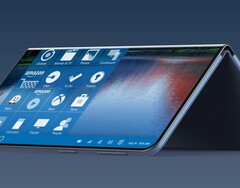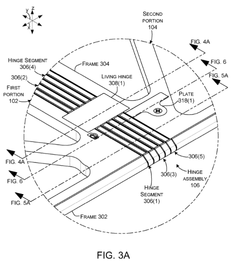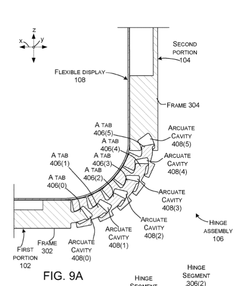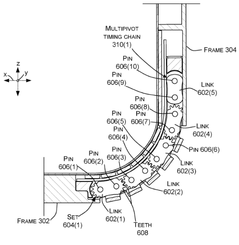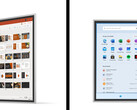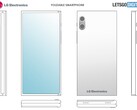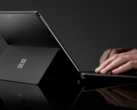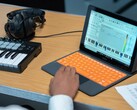The first foldable phones coming from Samsung and Huawei seem to have been plagued by technical problems related to the hinge system and display integrity. Samsung claims that it managed to fix all these problems and is ready to re-launch the Galaxy Fold this July, and the company is expected to send out review samples to testers soon, so we will soon see if the new iteration is any better. Meanwhile, other companies are planning to release foldable devices. Microsoft, for example, is rumored to be working on a foldable Surface device, and from what we can see from the latest patent publicized by the USPTO, the company is particularly interested in developing a sturdy and elegant folding mechanism.
The new Microsoft patent unveiled by the USPTO is titled “Flexible Display Hinged Device.” Most of the patent is explaining how a system made of two “Exoskeletal hinges” is to be implemented in a foldable device. According to the schematics, “the first exoskeletal hinge segment can define an arcuate tab that travels in an arcuate cavity defined by the second exoskeletal hinge segment to allow relative rotation between the first and second portions.”
Microsoft is aware that the flexible displays, which need to be integrated in the foldable device are prone to stress damage (especially for inward-folding devices), so the new hinge system is specifically designed to reduce the folding stress as much as possible: “the present implementations can employ a self-adjusting arcuate hinge design that can automatically adjust its length during rotation and can maintain the flexible display on the neutral axis during rotation. Flexible displays have advantages over rigid displays, but can be susceptible to damage. Thus, these implementations solve a technical problem of maintaining the flexible display in a neutral environment throughout the range of rotation of the first and second portions.”
Rumors about Microsoft first folding Windows 10 device have been making the rounds for more than a year now, but it looks like Microsoft is aware of the problems that come with flexible displays and is taking its time to deliver a quality product unlike Samsung’s Galaxy Fold.
I first stepped into the wondrous IT&C world when I was around seven years old. I was instantly fascinated by computerized graphics, whether they were from games or 3D applications like 3D Max. I'm also an avid reader of science fiction, an astrophysics aficionado, and a crypto geek. I started writing PC-related articles for Softpedia and a few blogs back in 2006. I joined the Notebookcheck team in the summer of 2017 and am currently a senior tech writer mostly covering processor, GPU, and laptop news.
> Expert Reviews and News on Laptops, Smartphones and Tech Innovations > News > News Archive > Newsarchive 2019 06 > New Microsoft folding Windows device patent reveals elegant hinge solution
Bogdan Solca, 2019-06-28 (Update: 2019-06-28)




